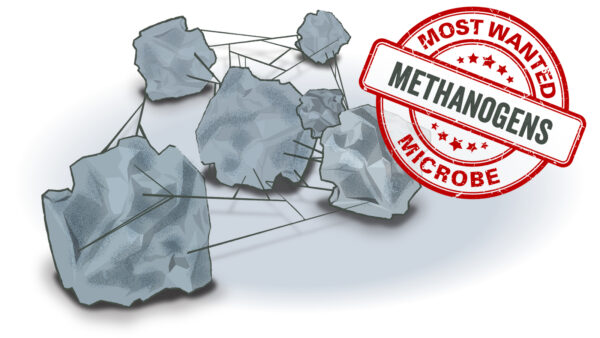From the editor:
This is the thirteenth post in an ongoing series profiling microorganisms of particular significance in water and wastewater systems. In this series we will cover microorganisms of many types including some that are beneficial, inhibitory and pathogenic.
Methanogens are a group of microbes that produce methane gas through the breakdown of simple substrates such as hydrogen, acetate and other simple carbon compounds in an anaerobic environment. Methanogens are known to be both thermophilic (optimal temperature between 55 ⁰C and 58 ⁰C) or mesophilic (optimal temperature is 40 ⁰C), which illustrates their ability to be active in a wide range of anaerobic environments. Methane has the potential to be both useful – as an additional fuel source – and harmful – as methane has a higher global warming effect than carbon dioxide. A common place to find these organisms are in wetland type environments like swamps and marshes. Anoxic environments form below the surface of the water as organic matter accumulates and begins to decompose. This results in the consumption of the remaining dissolved oxygen, creating the perfect conditions for methanogens to thrive.
Depending on the industry, these organisms can have beneficial or adverse effects.
- Biological wastewater treatment is an energy-intensive process in which nutrients are broken down by natural biological processes before being released back into the environment. To assist in energy recovery, many wastewater treatment plants are beginning to install anaerobic digesters to produce methane gas (or biogas) from their waste sludge. This biogas can be used to produce electricity or heat on-site, or transported off-site to be used in other industries and processes. With the integration of renewable energy sources – such as biogas recovery – and the adoption of energy efficiency equipment – such as variable speed blowers and fine bubble diffusers –wastewater treatment plants can strive to achieve net-zero energy operations. An example of this achievement can be seen by visiting the Downers Grove Sanitary District.
- In oil and gas applications, methanogens have been known to populate sessile environments and cause corrosion by removing hydrogen from the surface of material through oxidation. This type of corrosion is known as microbially influenced corrosion (MIC) and it accounts for ~ 20% of the total cost of corrosion for structures such as vessels and pipelines. Different tactics can be used to help prevent and minimize MIC, such as:
- Minimizing the amount of water within the system. Microbes thrive in water within a system and eat the nutrient-rich oil and gas at the interface of the fluids.
- Chemically treating the fluid to help destroy organisms and reduce biofilm formation. Methanogens can only occur in aerobic systems when a biofilm has formed creating an anaerobic environment for them to thrive.
- A strong monitoring program to ensure the microbial population does not get out of control. 2nd Generation ATP can be used to receive a quick indication of the bioburden level and determine the effectiveness of actions taken to reduce this microbial risk.









